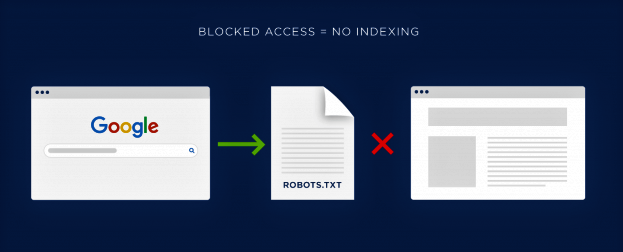SEO-friendly web design is the process of developing websites that can be fully accessible and indexable by search engines. The web design needs to be SEO-friendly because its straightforward SEO-friendly websites normally get more traffic than competitor websites that ignore search engines.
It’s obvious that you want to put a simple visitor’s perspective first in mind, and develop the website accordingly. Moreover, it is also important to keep search engines in mind and develop the website according to Googe ranking factors. For example

Recommended Practices :
Indexable Pages:
It’s SUPER important that Google can fully index the content on your site. Here’s how to make sure that happens:
It’s crucial that Google recognizes and indexes the content on your website. Here are a few steps you can follow to make sure it gets done.
ALT Texts:
As there are millions of pictures on the internet, which becomes difficult for Google to identify images. In other words, Google and other search engines can’t understand what an image is without your help.
That’s why Google recommends that you:
“Provide a descriptive filename and alt attribute description for images.”

Hidden Content
The text/content that’s been hidden behind forms or toggles and expandable menus can be hard for search engines to index.
For example:
Sometimes websites make sections of their content hidden behind tabs or “accordions” that show up after some action is performed.

Provide Transcripts:
Google can understand the content in the video or audio Just like with images, so they require texts. So, if you are going to publish any kind of multimedia content on your website, hook Google up with a text transcript on the page as well. For example, here is Mayfield’s speech video:

Here is the transcript:

Not Blocked:
The “noindex” meta tag in Robots.txt simply notify the search engines NOT to index the mentioned pages

This becomes extremely helpful for pages that are either under construction or designed only for internal staff which should not be public.
Fetching and Rendering
The Google Search Console has a little URL Inspection tool. This helps to let you know if Google has issues accessing your page. In case everything is good, you’ll get a green checkmark. Moreover, content plays an important part in Local SEO to get the relevant queries. For example, if you have a local restaurant business in Florida then your website content must be Flordia SEO compliant. In this way, you will be targeting local clients rather than clients from any other state or country.
Unique Content:
It is a great crime in the eyes of Google if you have duplicate content on your website. You must have unique content to gain better rankings. Otherwise, Google can de-rank your website if you have duplicate content,
Canonical Tag:
In some cases, you might have several different pages on your site with similar content… but you only want ONE of them to rank.
In some scenarios you might come across several pages on your website that require somewhat the same content.
For example, if you have every size and color of phone cases, and also you don’t want to get paneity for the duplicate content as well. Also, it also doesn’t make any sense to write unique content for the Black, Golden, Silver, and White version of your phone cases. So, what is the solution?
This tag tells the search engines:
“This page is worth indexing, however, the rest are just variations of that page”.
The drawback of the canonical tag is that the “variation pages” won’t get indexed. But it will help you to avoid a costly duplicate content penalty.
URL Structure
URLs are VERY underrated. In fact, most people put no thought into their URLs. And they end up looking like this:

Thoughtless URLs are not good for users as weird URLs are hard to remember for anyone.
The Search engines also struggle with long, confusing URLs. That’s because Google looks at your URL along with your meta tags and content on the page to figure out your page’s topic.
So you want to avoid URLs that don’t describe your page.
https://website.com/cat=90/10/09/2019/pageref810s3gy2
So, the best way is to use URLs that give users and search engines a signal of your web page’s topic. And that is easy to remember for your visitors.
Limited Number of Pages
Limited pages are important for two reasons First, more pages=more potential problems + difficult to manage.
For example. a website with 50 pages is infinitely easier to work with than a site with 1,000 pages.
Websites with a lot of pages are more likely to get into issues like:
- Duplicate content
- Thin content
- Google Panda penalties
- Outdated content
Second, smaller sites with a few manageable pages are more SEO-friendly.

Mobile-Friendly Design
Around 63% of all website traffic now comes from a mobile device, and the trend is increasing.

Nowadays, it is important to prioritize the mobile version of the website. Instead, you can create the website for mobile devices version, then worry about the needs of desktop users. Moreover, Google has started to run a “Mobile-first Index” that dedicatedly looks at the mobile version of your website.
Descriptive Titles
You must have two main goals with your title tag in your mind:
Goal #1: Describe the topic of your page.
In fact, Google’s Quality Rater guidelines explain that descriptive or helpful titles are one of the crucial parts of a high-quality search result.

Goal #2: Use the target keyword in the title.
Google puts a high priority on the title tags of a website. So you must make sure that important target keywords are included in your title.
Fulfilling these SEO goals will make your website a good standard in the eyes of Google. Obviously, a descriptive title that includes the keywords that people search for will help users find what they’re exactly looking for on your website.
